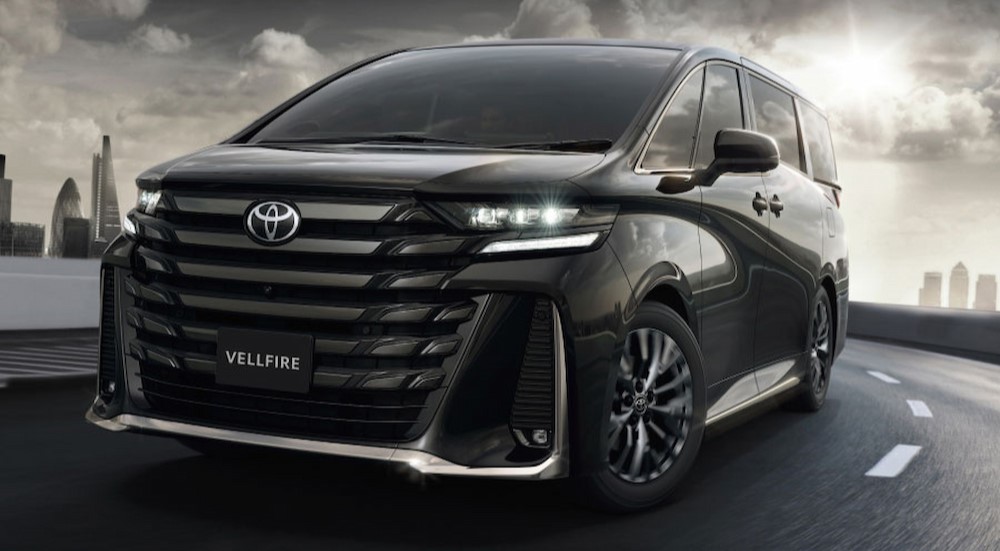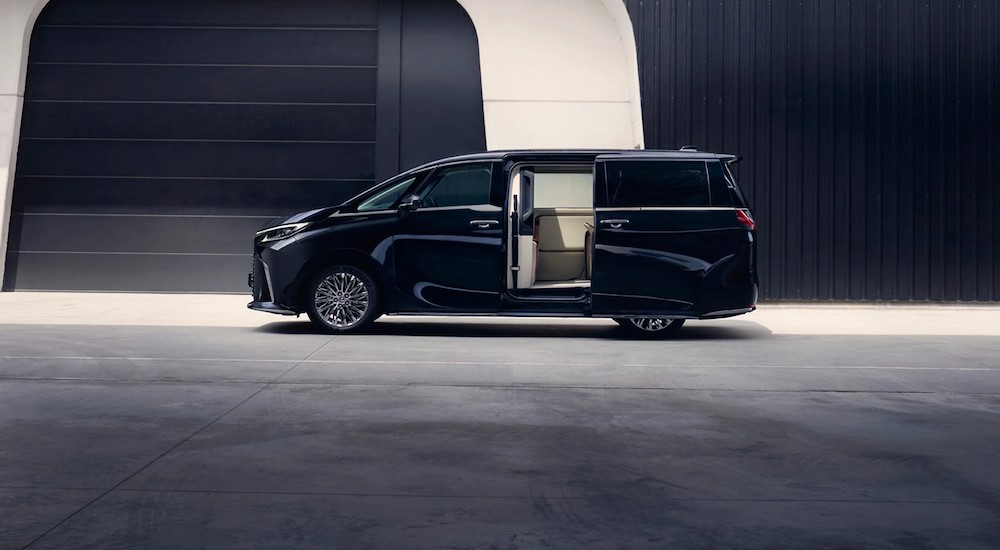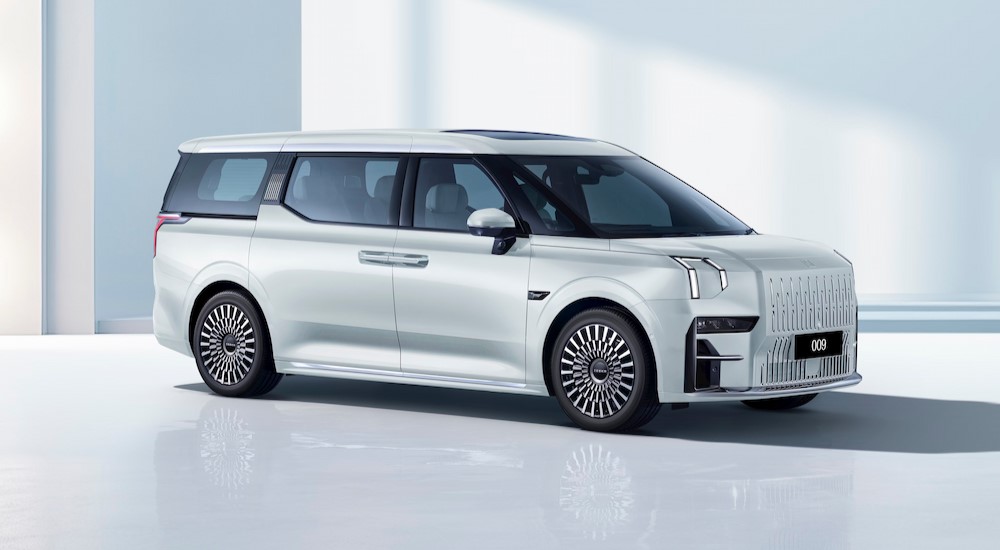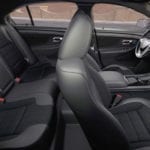Once a staple of ’80s and ’90s soccer mom culture, minivans have faced a precipitous decline over the last few decades, with only four models currently on offer: the Honda Odyssey, Toyota Sienna, Kia Carnival, and Chrysler Pacifica. These roomy family vehicles have been steadily replaced by a new generation of crossover SUVs that provide almost as much room and practicality in a decidedly more stylish and modern package. With sales down by as much as 80% since 2000, minivans are now something of an endangered species—at least on US roads.
The same can’t be said of the Asian market, where a new breed of minivans—rebranded as Multi-Purpose Vehicles (MPVs)—have taken the industry by storm. The region’s minivan market has remained strong and only seems to be growing, especially in up-and-coming China. The country is the center of the current MPV craze, with sales reaching an all-time high of 3 million units in 2016. The segment took a steep dip between 2019 and 2021, but MPV sales are now back up to their pre-pandemic levels, with 2.2 million units moved in 2023.
These Asian-market models aren’t your mama’s minivans. MPVs have little in common with their Western counterparts, emphasizing comfort, connectivity, and luxury above all else. The growth of the MPV segment can be tied to some obvious socioeconomic factors: China’s former one-child policy was replaced with a new three-child rule that’s driven the sale of larger vehicles, but Asian-market minivans don’t necessarily fit in with the Western stereotype of a carpool-ready family vehicle.
A rising Chinese middle class is seeking an opulent way to move around town, and MPVs are here to serve. From homegrown brands like Zeekr, Xpeng, Voyah, and Denza to Volvo, Buick, and Toyota, automakers are rushing to meet the increased demand for luxury minivans. So how has the humble minivan turned into the new go-to choice for well-heeled drivers across Asia, and what sort of advantages do they offer over traditional luxury vehicles? I’ll get into all that and more as I detail how the MPV has become the MVP of the Asian luxury market.
A Mini Movement
Town cars once ruled the roost when it came to the Asian luxury market, but MPVs have made significant inroads over the last two-plus decades. It all started in 1997 when Nissan released the Elgrand MPV, but the market really kicked into gear a couple of years later as Toyota unveiled the Alphard in 2002. The Japanese automaker also offers the Toyota Vellfire MPV, a sportier version of the Alphard that’s aimed at a younger segment of the market.
These MPVs distinguished themselves from their Western counterparts from the get-go, introducing such lavish features as built-in refrigerators paired with glassware cabinets, reclining second-row captain’s chairs, ottomans, and high-end audio systems with as many as 18 speakers. Four-wheel independent suspensions prioritize comfort, delivering a smooth, refined ride that’s a perfect fit for the executive on the go.
The Asian MPV market represents something of an electrified gold rush for luxury brands looking to capitalize on the trend. Kia’s Hi Limousine—essentially an ultra-fancy version of the Carnival minivan—has been a hit in the South Korean market, while the Buick Century represents the high end of the company’s GL8 MPV line. The plug-in hybrid model is allowing Buick to play catchup in a market where a lack of cutting-edge tech and EV models saw the brand lose ground over the last decade. The GL8 Century features an all-electric range of 86 miles, almost 400 hp, and all the expected luxury touches like plush second-row seats, a 32-inch display, and an intercom to communicate with the driver.
Mercedes-Benz is looking to get in on the action with vague plans to offer an all-electric MPV for the Chinese market based on its VAN.EA platform. With the brand eyeing a 12% to 14% margin on sales, the coming MPV will likely include a full list of luxurious options that are so important when it comes to turning a profit. “[It will be] a super-luxury variant, so to speak,” says Mathias Geisen, head of Mercedes’ van division. “In China, demand for vans is growing rapidly, especially in the luxury segment.”
A Jet for the Road
Toyota subsidiary Lexus upped the ante in 2019 when it debuted the LM. Short for “Luxury Mover,” this MPV is based on the third-gen Alphard and is packed with a 26-inch LCD entertainment monitor, a 19-speaker Mark Levinson audio system, leather seats, and even a champagne fridge. Priced at around $200,000, the LM represents the higher end of the current MPV market and is designed with a very different type of clientele in mind. While the typical driver of a minivan in the US might be a harried parent who’s tirelessly schlepping the kids between school, practice, and sleepovers, luxury MPVs are typically piloted by chauffeurs.
To that end, it’s an MPV’s second row—not the first—that tends to pack all the luxurious gadgets and goodies. The LM’s backseat includes a “warmth-sensing infrared matrix sensor” that tracks a rider’s body temperature to customize climate settings, a 48-inch display screen, and a glass partition, while the seats themselves are designed with two types of shock-absorbing material. The LM’s adaptive air suspension includes frequency-sensitive pistons in the shock absorbers aimed at reducing vibrations while also tweaking the MPV’s throttle and brake control to improve rider comfort when accelerating and decelerating.
If an MPV like the Lexus LM sounds like a first-class experience, there’s a good reason. The company sought input from private jet manufacturers when designing the LM, giving Lexus a better look into the vehicular expectations of the well-to-do. The LM’s fully reclining seats and sound-dampening five-layer headliner were some of the notable results of this collaboration, imbuing the MPV with a decidedly luxurious feel that should be familiar to any driver whose other ride is a G5.
Step Aside, 007
While China’s MPV market was long dominated by imports, a new breed of homegrown MPVs is now taking center stage. The Xpeng X9, Voyah Dream, Denza D9, and Li Mega all represent the middle of the minivan market, but the posh Zeekr 009 best encapsulates the current Chinese luxury MPV craze.
Released in 2023, this all-electric MPV is among the more luxurious offerings on the market, offering a satisfying blend of comfort, convenience, and connectivity that embodies everything there is to love about the emerging segment. The 009 is based on the same Sustainable Experience Architecture (SEA) modular electric vehicle platform as the Polestar 4 and Volvo EM90, which are both produced by Zeekr’s parent company in the Geely Group.
The 009’s front row features a 15-inch display designed with Qualcomm Snapdragon chips that give the van’s infotainment system loads of processing power, but like most MPVs, the 009 is best judged by its second row. The MPV could easily seat seven or eight passengers based on its size, but Zeekr has prioritized comfort over capacity with a 2-2-2 design that gives every passenger plenty of room. That’s especially true in the middle row, where airplane-style seats can recline all the way back for a little mid-commute snooze simply by manipulating the armrest-based control panel, which also allows passengers to adjust their seats’ heating, cooling, and massage features.
In an attempt to meet the demands of the busy executive, the 009’s second row features a high-definition camera and a 15-inch display that folds down from the roof for mobile conference calls. An HDMI slot even allows passengers to plug their computer into the A/V system and give a crucial PowerPoint presentation while they’re in transit.
Zeekr’s flagship MPV also excels from a performance perspective with a 114- or 140-kWH battery that gives the 009 between 436 and 511 miles of range. That figure is calculated using the China Light-Duty Vehicle Test Cycle (CLTC) but translates into about 385 miles by our EPA-based standards. The 009 comes standard with 4WD and is powered by two electric motors that imbue the MPV with around 525 hp and 506 lb-ft of torque. That last number is especially important as the 009 weighs in at almost 6,000 lbs. The instant acceleration offered by the model’s potent EV powertrain allows the 009 to quickly get up to speed despite its bulk, with a zero-to-sixty time of 4.5 seconds.
The 009’s white Nappa leather upholstery might provide the clearest illustration of the differences between the Asian and Western minivan markets. In the US, minivans are made with kids in mind and designed with lower-tech interiors and spill-resistant surfaces that can withstand even the worst traveling temper tantrums. The Asian luxury MPV market is entirely different, resulting in true luxury vehicles that just happen to look like their often-messy American counterparts.
Priced between $70,000 and $110,000, the Zeekr 009 isn’t the most expensive MPV on the market, but it’s still a substantial investment. Those seeking a slightly more understated version of the 009 can investigate the China-exclusive Volvo EM90, which is pretty much the same vehicle with a more restrained exterior. The EM90 is offered exclusively in RWD and tops out at 269 hp with around 460 miles of range by CLTC standards.
The Posh Minivans That Are Dominating Asia
Asian-market luxury vans provide an intriguing look into how drastically cultures can differ. In the US, few drivers—especially those of considerable means—would dare be caught behind the wheel of a minivan. Luxury sedans and SUVs are still the preferred ride for those who can afford to splurge upward of $100,000 on a new vehicle, while the minivan has long been relegated to school drop-off lines and Saturday morning soccer practice.
In the Asian market, minivans simply don’t come with the same sort of baggage. In the eyes of Asian drivers, MPVs provide a clever mix of spaciousness and practicality that makes them an ideal place to catch up on business, take a conference call, or unwind after a long day of meetings. By catering to this emerging market and packing the humble minivan with a wealth of high-end features, automakers are revolutionizing the segment at a breakneck pace.
It’s hard to know if America will ever be able to overcome its prejudice and embrace this new era of luxury-focused minivans, but it doesn’t seem like they’ll be losing ground in the Asian market anytime soon.






